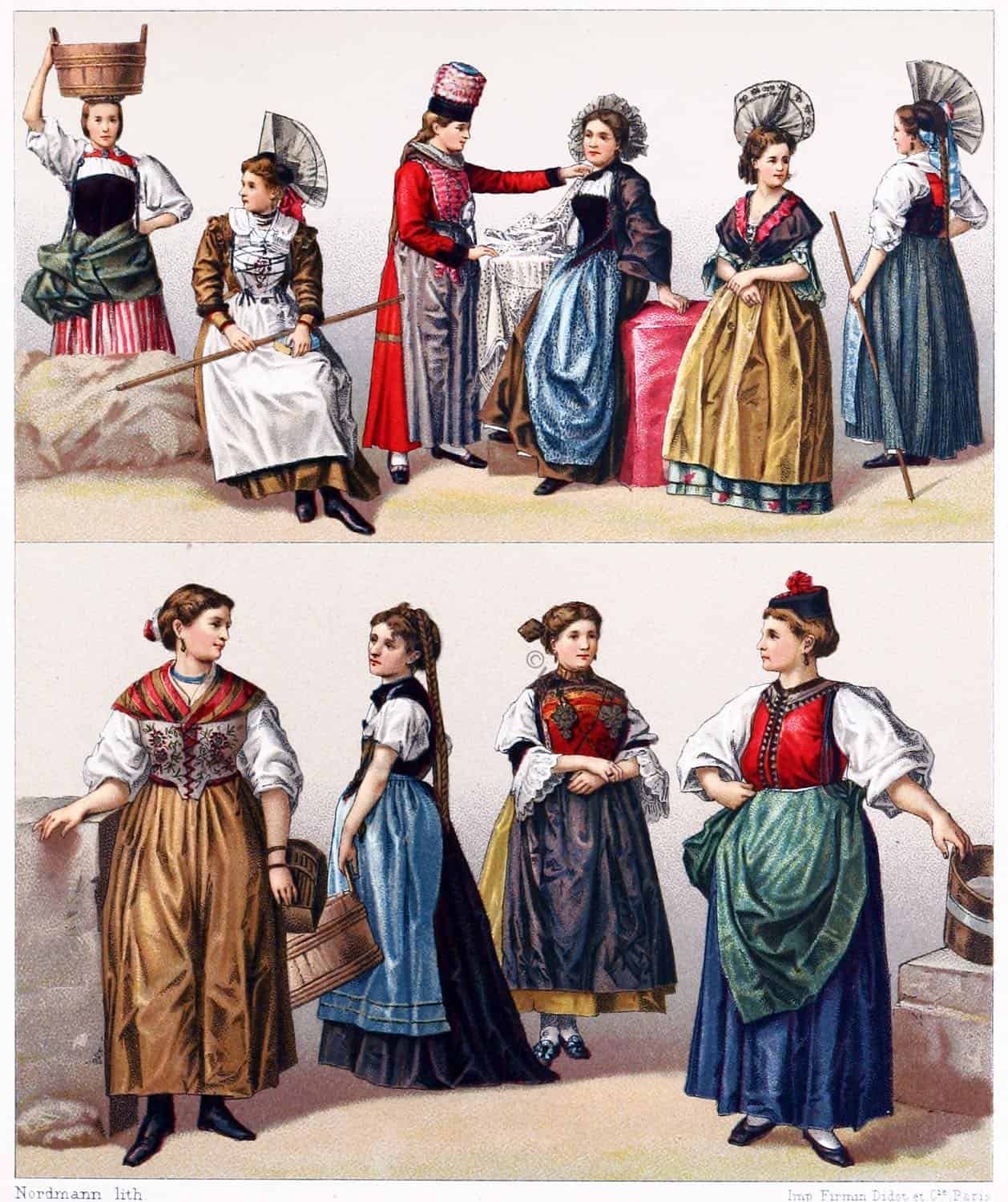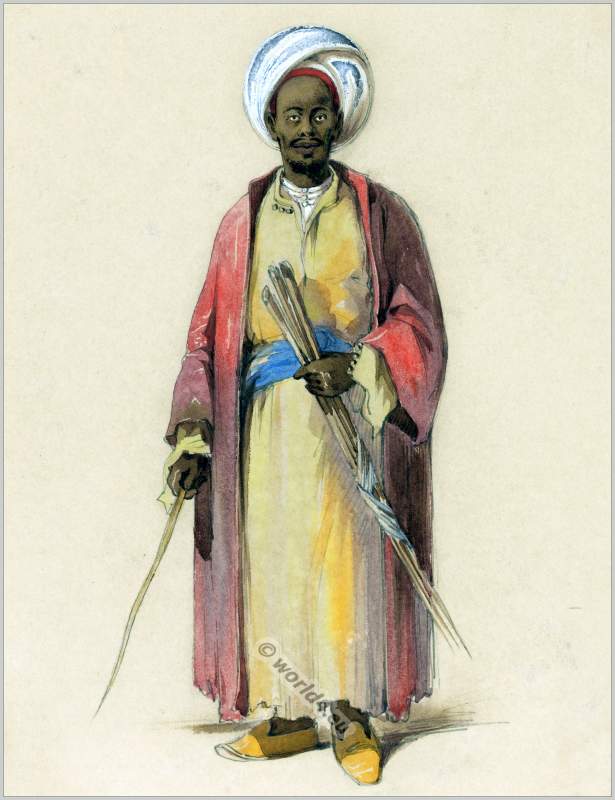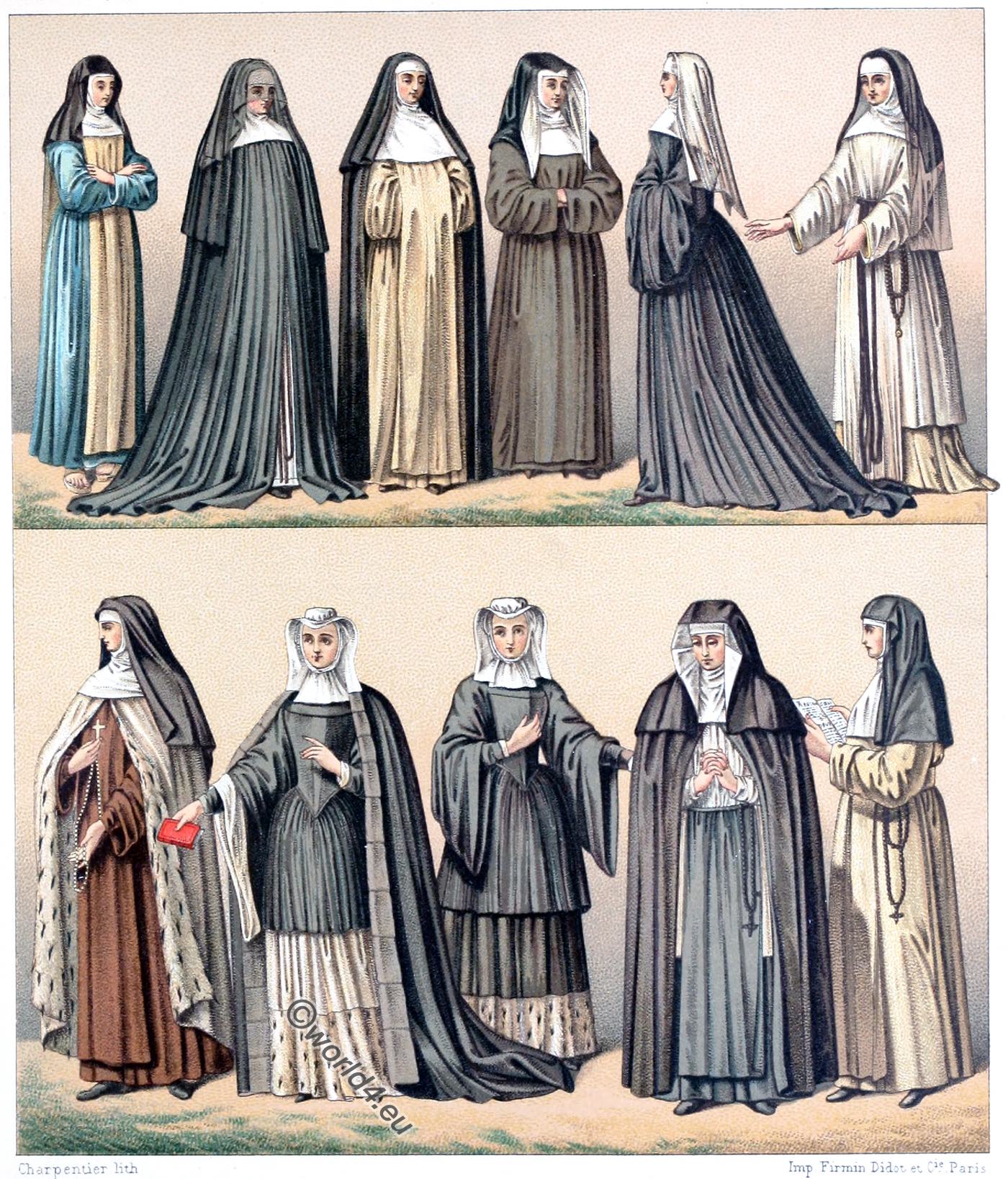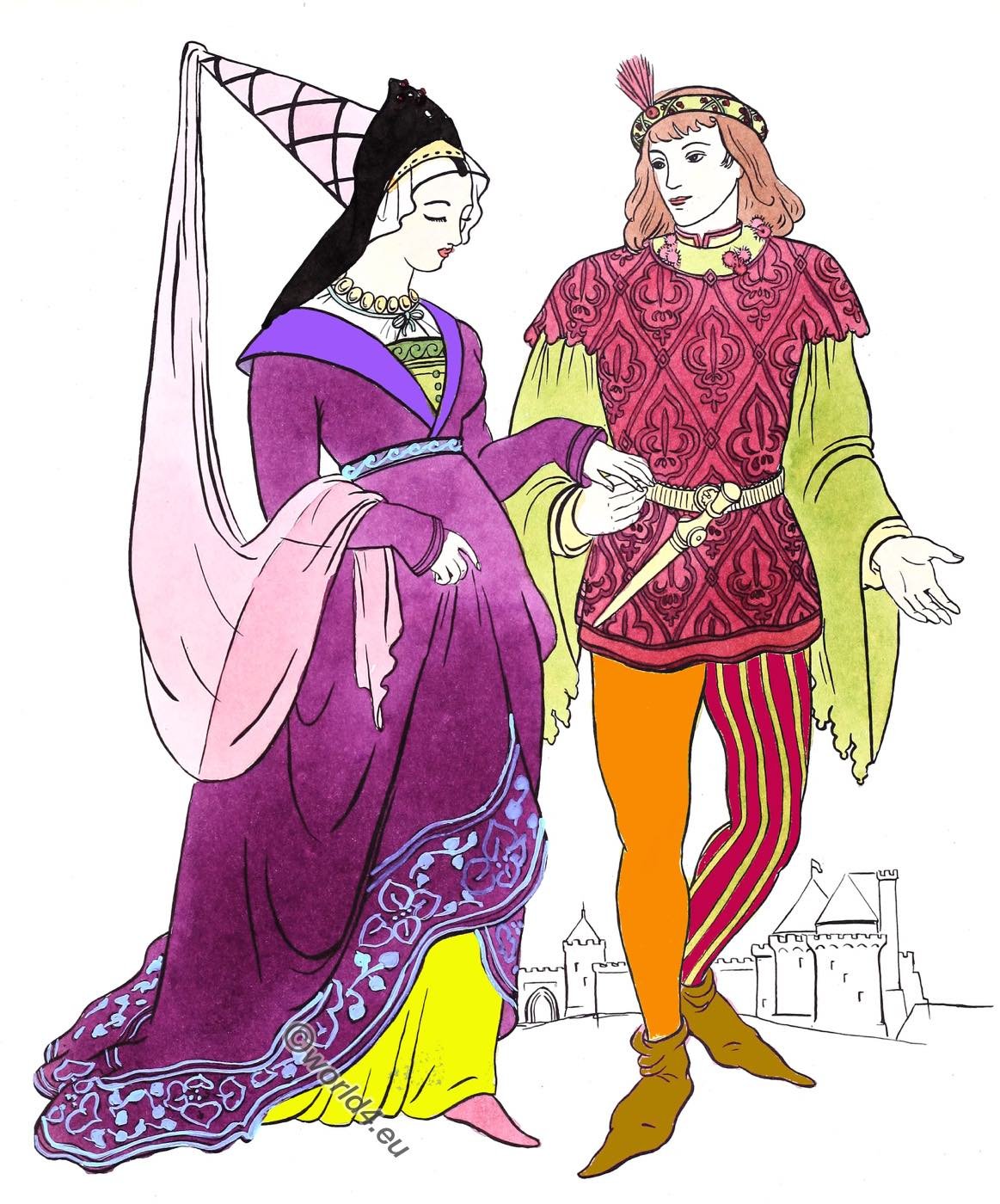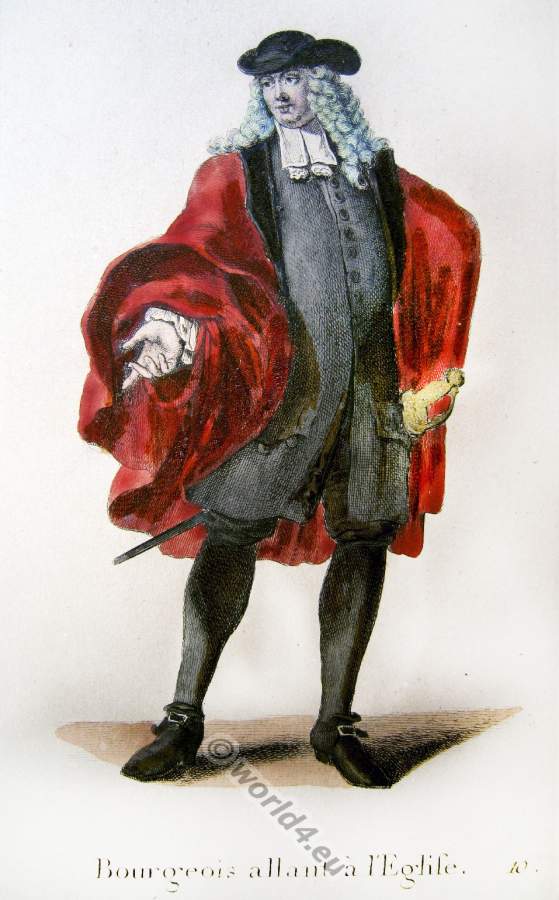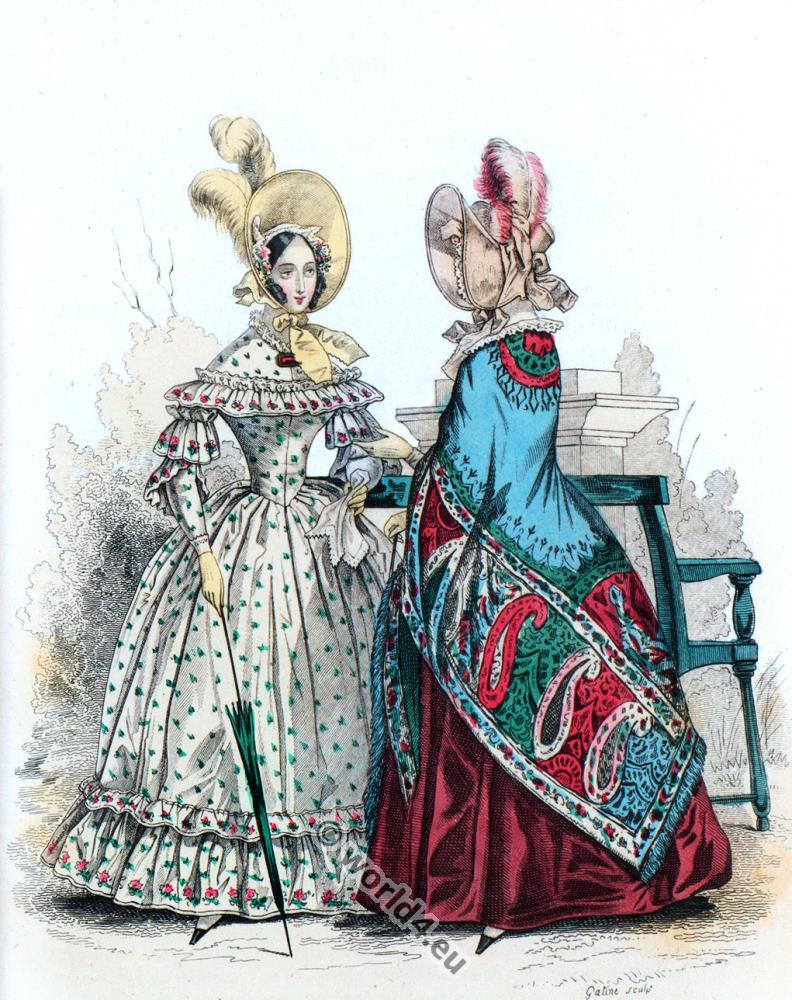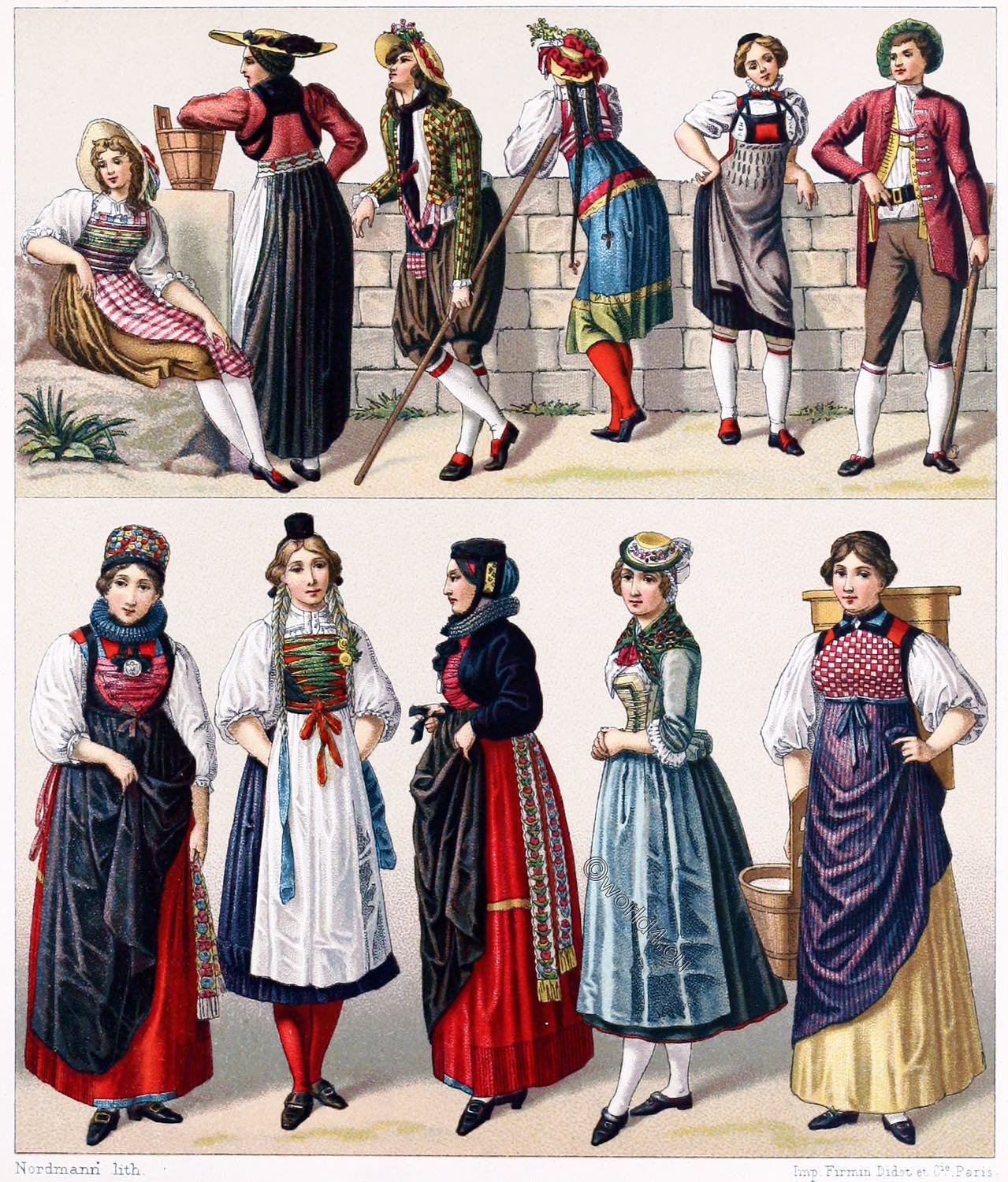
SWISS FOLK COSTUMES.
LUCERNE, FREIBURG, ZUG, BERN, SCHWYZ, SCHAFFHAUSEN AND WALLIS. FIRST HALF OF THE XIXTH CENTURY.
No. 1 – Woman from Lucerne. Large straw hat. Shirt, closed at the neck, with short sleeves. Embroidered bodice. Light-coloured wrinkled skirt, reaching to the knees. White stockings, cut-out shoes with red rosette.
Nos. 2, 7 and 9 – Women from Freiburg.
No. 2 belongs to the French part of the canton of Fribourg. She wears false hair. Over it a broad straw hat decorated with black lace. Long skirt. On the back of the bodice the wearing ribbons of the milk seller.
Nos. 7 and 9 belong to the German part of the canton of Fribourg. Blue ruff. On one neckband a silver Agnus Dei. Laced bodice, black silk apron, red skirt and belt with falling, embroidered and fringed ends.
Nos. 3 and 4 – Farmer and farmer’s wife from Zug in Sunday dress. Characteristic of these mountain dwellers is the mass of ribbons with which they decorate their hats, neckerchiefs and waistcoats. The hat in particular is covered with ribbons and flowers on persons of both sexes.
Nos. 5 and 11 – Women of the Canton of Bern.
No. 5 Narrow bonnet of black satin on the hair taken up towards the crown, which the young girls wear hanging freely in braids. Half sleeves. The name and surname of the woman are embroidered on the shirt above the breasts on the right and left. A red, diagonally edged tie is wrapped around the neck. Long skirt, apron, stockings fastened below the knee.
No. 11 depicts a valley dweller, a milk seller from Oberhassli. She is wearing a small hat made of black velvet. The chest is covered with a bib of chequered fabric. A large apron protects the long skirt of light-coloured fabric.
No. 6 – Inhabitant of the canton of Schwyz. Jacket with narrow braids, open waistcoat showing the shirt held together by a leather belt, breeches, white stockings tied below the knee. Escarpins with red ribbons.
No. 8 – Young girl from Schaffhausen. The headdress consists of a very small cylindrical lid of black velvet, held in place by two narrow ribbons at the level of the crown. Braids of different colours braided together, from the ends of which two blue bows hang down. Shirt with short sleeves, embroidered and laced bodice. Short skirt and white apron held by red ribbons.
No. 10 – Young girl from Valais. Small straw hat with turned-in brim, decorated with lace, sometimes with gold fabric. Breastcloth over a finely embroidered overshirt, bodice with short lace-trimmed sleeves and bib, short skirt and silk apron.
Nos. 1, 2, 3, 4, 5 and 6 from the collection of Swiss and German costumes, Paris by Martinet, rue du Coq.
No. 7, 8, 9, 10 a. 11 from the costumes of the Hamburg, Dutch and Swiss women; drawn by Lanté and engraved by Gatine. Paris, 1827.
Cf. on the text: Reclus, la Suisse (Géographie universelle, tome III, Europe centrale), Paris, 1878.
Source: History of Costume in Chronological Development by Auguste Racinet. Edited by Adolf Rosenberg. Berlin 1888.

